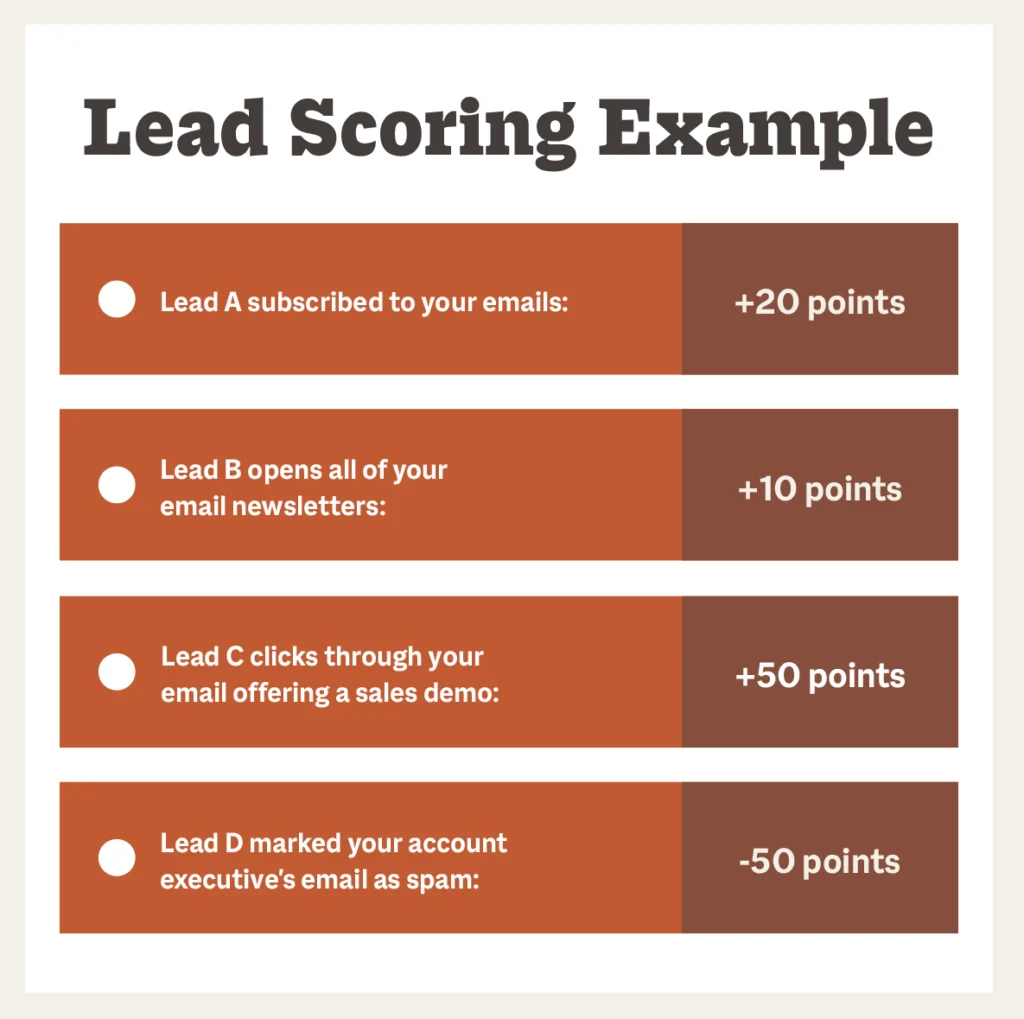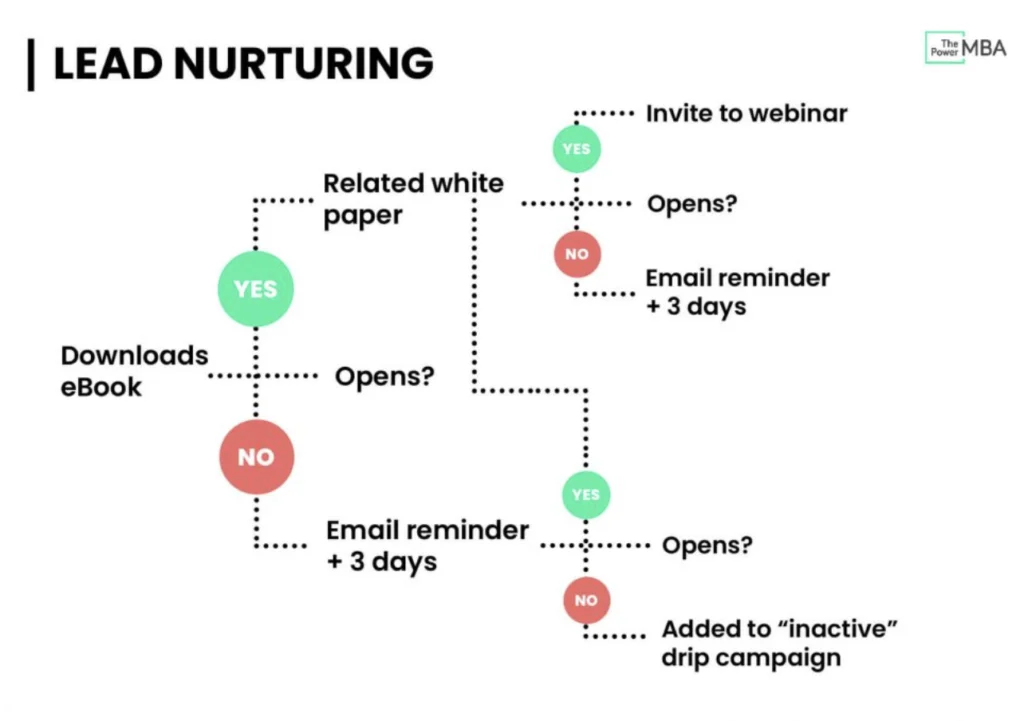8 Simple Ways to Speed up Your Sales Cycle
The faster your sales cycle is, the more leads your business converts. When leads wade through long and complicated processes, the lead is more likely to lose interest or find other solutions. However, with the latest strategies and streamlined processes, businesses can move leads faster through the buyer’s journey with a personalized approach.
Learn eight proven strategies the top marketing and sales teams use to convert more leads through a fast sales cycle.
Key Takeaways:
- Create a consistent process with predictable actions so each agent knows how to handle leads
- Automatic processes like lead scoring quickly move leads forward or backward based on actions.
- Understand customers to build personalized strategies that attract higher quality customers and convert them faster
1. Build a Consistent Sales Process
Do sales and marketing know how the sales process works and their individual roles? Marketing teams that want to improve the efficiency of the sales cycle can begin by defining what the sales cycle looks like.
To build a sales process, marketing teams start with mapping the customer’s journey. The customer journey map helps marketing teams understand customers’ behaviors and key actions that customers take along the sales journey.
From there, marketing teams can decide what should occur at each stage. For example, after customers fill out contact forms on the business website, the sales process dictates what email campaigns to run for those customers. Next, the sales process outlines when a sales agent reaches out to leads or when the lead moves from marketing to sales.
How To Improve Your Sales Process and Increase Business
2. Unify Sales and Marketing
Aligned sales and marketing teams reduce the sales cycle length. For example, one research report showed sales and marketing alignment could increase revenue growth by 19% and profits by 15%.
A business can unify these departments through centralized data management systems. The system creates a single source of truth where each department uploads and accesses data to ensure everyone’s on the same page. The system also allows both teams to communicate efficiently throughout the sales cycle.
3. Use Automatic Lead Scoring
Lead scoring is assigning value to customer demographics and actions. Then, when leads reach designated benchmarks, the lead moves to the next stage of the sales cycle.
For example, each demographic that matches the ideal customer profile might be worth one or two points. Then, whenever that lead clicks on ads, opens emails, and downloads marketing content, that leads receives more points.
In addition to positive points, leads also receive negative points when they perform actions like unfollowing social media accounts or unsubscribing from email newsletters.
Lead scoring not only consistently moves leads to the next stage but also tells sales and marketing which leads are most valuable or ready to buy so sales can focus on the hot leads first.

4. Nurture Leads until They’re Ready to Buy
Only 3% of the market is ready to buy. Conversely, 63% of consumers researching companies don’t purchase from the business. When businesses treat leads equally, marketers clog up the sales pipeline with weak leads or consumers with no intention of buying from the company, which slows down the sales process.
Lead nurturing is an easy strategy for clearing out the sales pipeline so the marketing and sales team can focus on leads that actively express interest in the business and products. Companies that nurture leads share content and information with potential buyers to address all concerns and build trust.
For example, when a lead downloads a digital asset, marketers can import that lead into an email drip campaign that introduces the business and products.

5. Incorporate Sales Automation
Over a third of marketers use automation to streamline marketing and sales activities. Marketers spend hours each day on tasks that automation can perform in seconds. For instance, the average sales rep spends 21% of their time writing emails and 17% prospecting leads. Automating those tasks allow sales and marketing to perform the activities faster and frees up reps for conversion activities like calling hot leads.
6. Listen to Customers
Listening to the target audience helps marketers create proactive sales approaches to shorten the sales cycle. Social listening is one of the most effective ways to hear what customers say.
Many customers share their questions and concerns publicly on social media and forums. With 3.6 billion people on social media, businesses can see social interactions from most of the world’s population.
Social listening is listening to those conversations to understand how customers feel, then building a sales process to address those concerns. Social listening includes monitoring:
- Comments on social media
- Mentions on social media
- Private messages
- Tags on social media
- Likes, follows, and unfollows on social accounts
Marketers and salespeople can use the information gathered from these comments and mentions to customize the sales approach to what customers say. For instance, if customers share a common challenge, marketers can address that challenge earlier in the sales process to capture more leads.
7. Personalize Marketing Approaches
Research from McKinsey & Company shows that companies that use personalization saw better customer outcomes than those that didn’t use personalization. Better results include more repurchases, upward migration, and greater customer loyalty.
Personalization varies in marketing from native ads based on customer behavior to highly personalized account-based marketing strategies for B2B businesses. Personalization aims to attract quality leads and address specific challenges based on customer demographics or B2B buyer firmographics. Then, offer solutions through benefits directed at customers’ unique needs and situations.
For example, a B2B decision-maker in the finance department would be more interested in a product’s financial benefit. Meanwhile, a B2B decision-maker in the marketing department wants to know how software or products improve sales processes.
8. Clean the CRM Database and Reengage Old Leads
Leads often grow stale after a time because the lead loses interest or the business isn’t actively engaging the lead. However, not all businesses remove these old leads from the CRM system, which means the sales pipeline is full of low-value leads that slow down the sales cycle.
Marketers should regularly audit the system to keep the CRM clean with only active leads. Then, create a process for reengaging inactive leads and designate how long a lead can remain inactive before the system deletes the old lead.
Streamline Your Sales Cycle
Televerde helps businesses streamline the sales cycle through a team of highly trained customer journey experts. Our innovative processes and cutting-edge technology ensure all the top leads move quickly through the sales cycles to boost your business’s revenue.
Contact us to learn more about our customer journey solutions.


